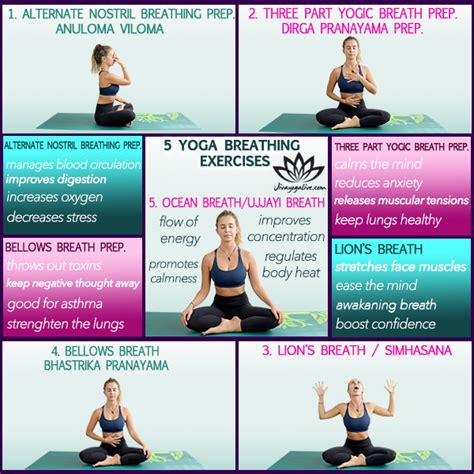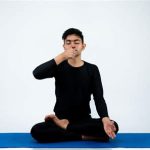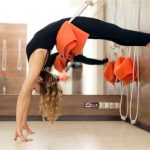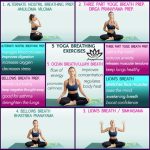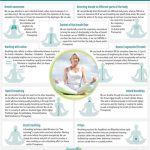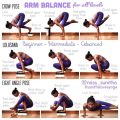Mastering Daily Yoga Breathing Practice: Techniques, Benefits, and Long-Term Impact
Yoga breathing, or pranayama, is a foundational element of yoga practice that can profoundly affect both mental and physical health. While yoga is often associated with complex poses and flexibility, daily yoga breathing practices are an accessible and highly effective method for enhancing overall well-being. Whether you’re a beginner or a seasoned yogi, mastering pranayama can unlock greater mental clarity, emotional balance, and physical resilience. In this article, we will explore key concepts, historical background, practical applications, and much more to guide you toward a comprehensive understanding of yoga breathing practices.
Introduction to Yoga Breathing
Pranayama, which translates to “breath control,” is more than just a breathing exercise. It is the art of consciously regulating the breath to create a profound connection between mind and body. Yoga masters have practiced pranayama for centuries, harnessing its power to improve focus, increase energy, and balance emotional states. Yet, in today’s fast-paced world, the simplicity and benefits of daily pranayama practice are often overlooked. This article will guide you through the fundamentals, provide evidence-based benefits, and outline how incorporating pranayama into your daily routine can lead to significant, sustainable changes in your well-being.
Key Concepts of Daily Yoga Breathing Practices
To understand the practice of pranayama, it is essential to grasp some foundational concepts:
- Prana: The vital life force or energy that sustains life.
- Ayama: Control or extension, particularly in relation to the breath.
- Nadi: Energy channels through which prana flows.
- Bandhas: Energy locks in the body that control the flow of prana during breathing exercises.
Key techniques in pranayama include:
- Ujjayi Breathing: Known as “victorious breath,” this technique involves deep inhalation through the nose while constricting the throat.
- Kapalabhati: A dynamic breathing technique often referred to as “skull-shining breath” due to its energizing effects.
- Nadi Shodhana: Alternating nostril breathing, which helps balance energy and calm the mind.
- Bhramari: A humming breath that can help alleviate stress and anxiety.
Historical Context of Pranayama
The roots of pranayama trace back to ancient Indian texts, including the Upanishads and the Yoga Sutras of Patanjali. Historically, pranayama was not practiced in isolation but integrated into a broader yoga practice that involved physical postures (asanas), meditation, and ethical guidelines. In classical yoga philosophy, pranayama is the fourth limb of the eight-limbed path laid out by Patanjali. Ancient yogis believed that mastery over the breath would lead to mastery over the mind and body, creating a direct path to spiritual enlightenment.
In modern times, pranayama has been scientifically validated for its ability to influence the autonomic nervous system, reducing stress, improving lung capacity, and fostering mindfulness. Many contemporary practitioners have embraced pranayama for its accessibility, allowing people from all walks of life to benefit from its effects without requiring complex physical postures.
Current State of Yoga Breathing Practices
Today, the popularity of pranayama is growing, especially as its benefits are being recognized in mainstream health and wellness circles. Research studies have demonstrated pranayama’s positive effects on reducing anxiety, improving focus, enhancing cardiovascular function, and boosting lung health. With the rise of mindfulness practices, many are incorporating pranayama into their daily routines to cultivate a deeper connection to the present moment.
Yet, there’s still much debate within the wellness community about the best ways to integrate pranayama into a modern lifestyle. Should pranayama be practiced in isolation, or is it more beneficial when combined with physical asanas? And how often should it be practiced to reap the maximum benefits?
Practical Applications of Daily Yoga Breathing
Implementing pranayama into daily life doesn’t require extensive time or effort, but consistency is key. Here are practical tips for integrating yoga breathing into your daily routine:
- Morning Routine: Start your day with 5-10 minutes of Nadi Shodhana or Ujjayi breathing to set a calm, focused tone.
- Midday Reset: Use Kapalabhati during midday slumps to boost energy levels and clear mental fog.
- Evening Wind-down: Practice Bhramari before bed to calm the nervous system and improve sleep quality.
Case Studies of Yoga Breathing Success
To better understand how pranayama can impact individuals, consider the following case studies:
| Case | Challenge | Outcome |
|---|---|---|
| Corporate Executive | High stress and anxiety levels | After 8 weeks of daily Nadi Shodhana practice, the executive reported a 40% reduction in anxiety and improved decision-making ability. |
| Athlete | Poor endurance during training | By incorporating Ujjayi breathing, the athlete noticed a marked improvement in lung capacity and stamina over the course of 6 months. |
| University Student | Difficulty concentrating during long study sessions | With daily Kapalabhati, the student improved focus and reduced stress before exams, reporting better academic performance. |
Stakeholder Analysis: Who Benefits from Pranayama?
Pranayama benefits a wide array of individuals, including:
- Yoga Practitioners: Pranayama enhances mental focus and asana performance.
- Healthcare Providers: Breathing exercises offer non-pharmaceutical stress management techniques.
- Corporations: Promoting pranayama can lead to increased employee productivity and reduced burnout.
- Athletes: Improved lung function and oxygen efficiency.
- Students: Reduced anxiety and improved focus during academic challenges.
Implementation Guidelines for Daily Yoga Breathing
To maximize the benefits of pranayama, follow these implementation guidelines:
- Set a Regular Time: Consistency is key. Dedicate at least 10 minutes daily to pranayama.
- Combine with Meditation: For deeper mindfulness, pair pranayama with meditation practices.
- Start Slowly: Begin with basic techniques like Nadi Shodhana, then progress to more advanced practices as your comfort level increases.
- Create a Calm Space: Ensure a quiet, distraction-free environment during practice.
Ethical Considerations
While pranayama is generally safe, ethical considerations should be addressed. Breathing exercises, particularly advanced techniques, should be practiced mindfully and responsibly. Overuse of certain pranayama techniques like Kapalabhati can strain the lungs or nervous system, leading to dizziness or over-excitation. It is also important not to promote pranayama as a cure-all. Though beneficial, it should not replace conventional medical treatments without proper guidance.
Limitations and Future Research
Despite its many benefits, pranayama is not a one-size-fits-all solution. Individuals with respiratory issues, for instance, should consult a healthcare provider before starting certain pranayama techniques. Moreover, while numerous studies validate pranayama’s benefits, more research is needed to understand its long-term impacts on various populations, especially in combination with modern lifestyle stressors. Future studies should explore pranayama’s role in treating chronic diseases, such as hypertension and diabetes, and its effectiveness across diverse demographics.
Expert Commentary
Experts agree that pranayama holds immense potential for enhancing overall well-being, but it requires a nuanced, individualized approach. According to Dr. Anjali Mehta, a researcher in holistic health, “Daily yoga breathing is one of the simplest, yet most effective tools we have for managing stress in our modern world. However, as with all wellness practices, it should be personalized and approached with mindfulness to avoid strain or burnout.” Holistic practitioner Michael Reeves adds, “Pranayama helps build resilience, both mentally and physically. It’s like a reset button for the nervous system, but only when practiced consistently over time.” The key, therefore, is not just in the techniques themselves but in how they are applied to one’s specific needs and circumstances.
